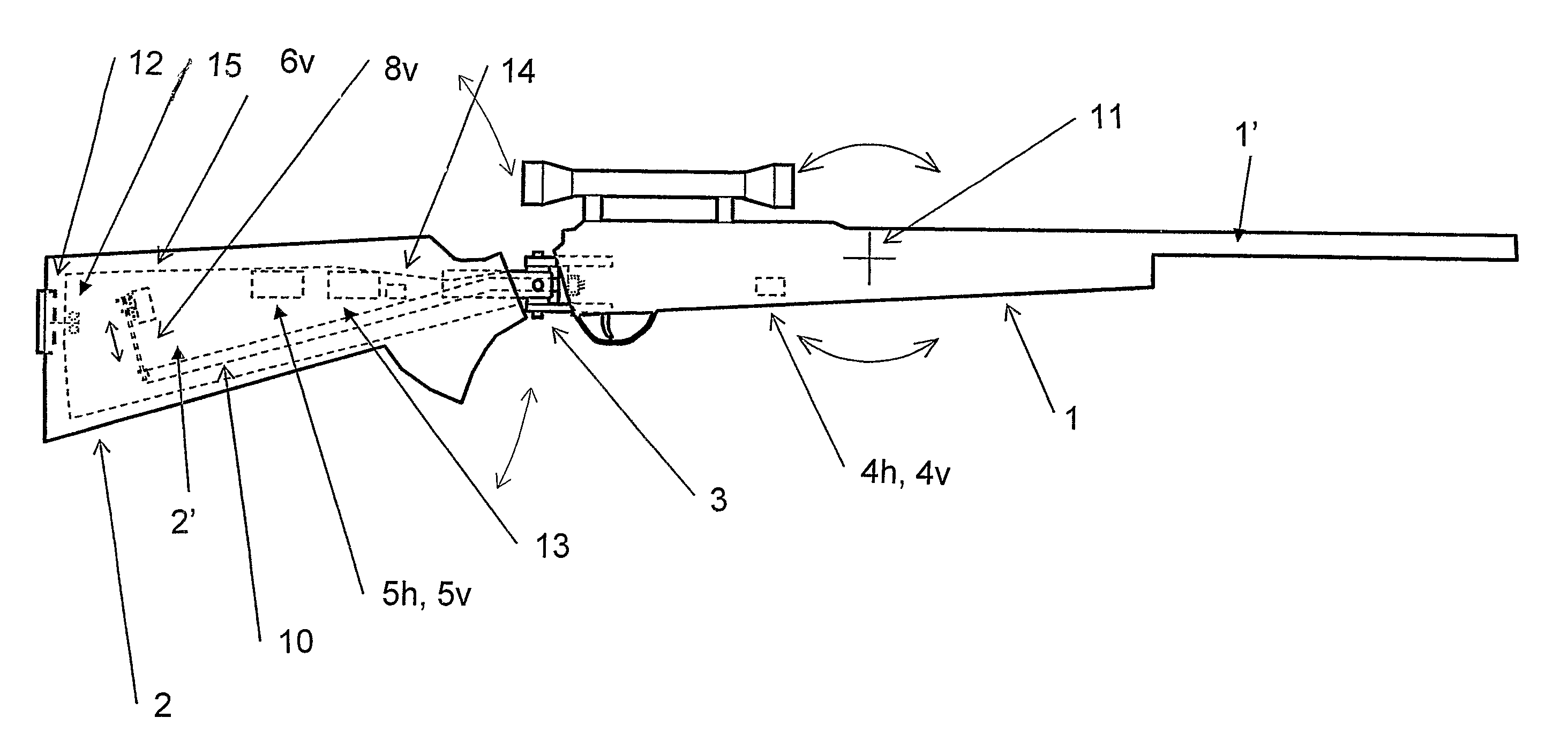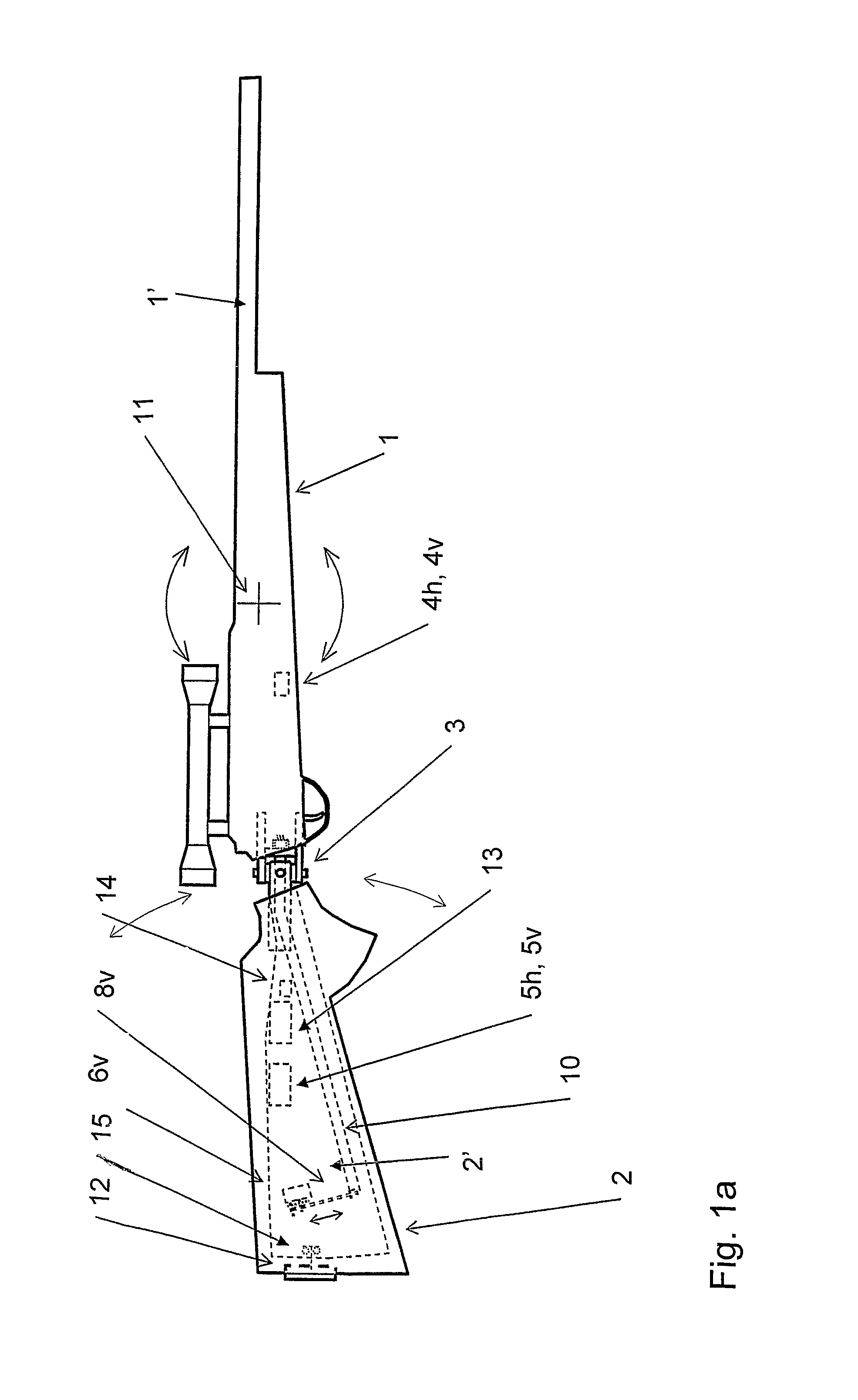Method and a device for stabilizing aiming direction for rifles and handguns and fire arm
a technology for stabilizing aiming direction and rifles, which is applied in the direction of aiming means, butts, weapons, etc., can solve the problems of limited accuracy of fire in rifle shooting and handgun shooting, lack of weapon precision or quality, and quality of weapon and ammunition, etc., to achieve fast changes, easy to aim, and long time to choose
- Summary
- Abstract
- Description
- Claims
- Application Information
AI Technical Summary
Benefits of technology
Problems solved by technology
Method used
Image
Examples
Embodiment Construction
[0026]FIG. 1a The figure shows a rifle with a stabilized aiming direction seen from the right side. Certain important functional elements, which are hidden, are shown in broken lines. Certain hidden elements are not shown in the drawing. Between the two mutually movable parts, front part 1 and the butt end 2, parts of a hinge 3, a bearing 3, which gives the two parts movability horizontally and vertically may be seen. The gap between the butt end and the front part have for clarity reasons been made bigger than what is needed to give the desired movability. Through the bearing 3 the rod 10 applied in the front part protrudes backwards in the butt end. At the end of the rod the arm 8v is coupled so that it can transmit a rotational movement of the motor 6v to a mainly linear and vertical movement of the rod 10 end, whereby the angle between the butt end and the barrel can be changed. Parts which give movement horizontally have been deleted in the figure to increase the clarity. In th...
PUM
 Login to View More
Login to View More Abstract
Description
Claims
Application Information
 Login to View More
Login to View More - R&D
- Intellectual Property
- Life Sciences
- Materials
- Tech Scout
- Unparalleled Data Quality
- Higher Quality Content
- 60% Fewer Hallucinations
Browse by: Latest US Patents, China's latest patents, Technical Efficacy Thesaurus, Application Domain, Technology Topic, Popular Technical Reports.
© 2025 PatSnap. All rights reserved.Legal|Privacy policy|Modern Slavery Act Transparency Statement|Sitemap|About US| Contact US: help@patsnap.com



